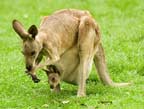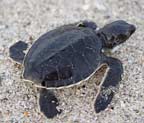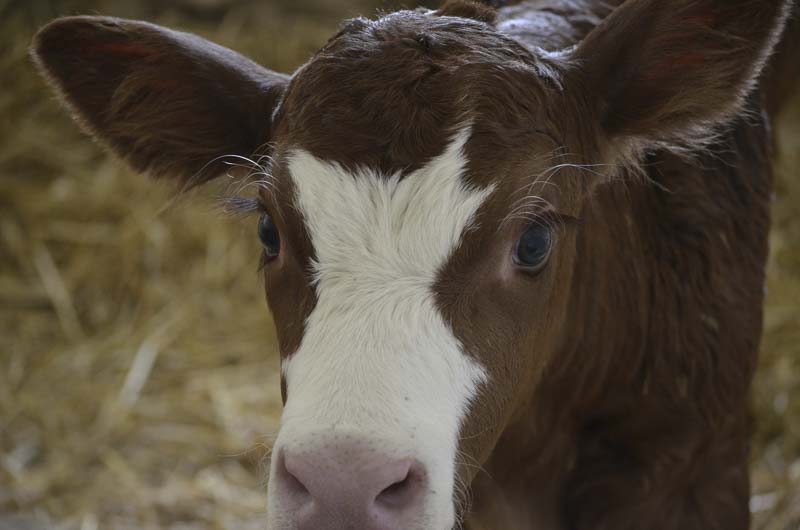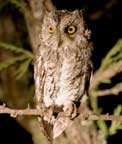Do Animals Tend to Look Like the Mother

Spring is the perfect time for infant animals to be born! Many animals accept babies in the spring since the warmer conditions makes it is easier for them to find food to feed them. Warmer weather also makes it easier for modest babies to survive. Polar bears, who live in climates that are e'er very common cold, actually have their babies during the wintertime while they are hibernating. When bound comes and warms things upward a little, a mother acquit will bring her cubs out of their cozy den for the starting time time and teach them how to find food for themselves. Other kinds of bears and another large mammals also have babies during the winter, since they tin nurse their babies and not take to exit their den to notice food.
In that location are lots of different kinds of animals living on earth. That means that there lots of very different kinds of baby animals! Even though we commonly think of babies as being minor and helpless when they are showtime built-in, that isn't true for all animals. Some animals are very big fifty-fifty when they're first built-in. Sometimes even the smallest ones are able to live on their own without whatsoever help from their parents when they are born. Go on reading to acquire well-nigh some different kinds of animals and different ways that their babies are born and cared for.
Mammals are animals that take pilus or fur, are warm-blooded, and feed their babies with milk. Mammals give live birth, meaning that their babies are born from the mother's body instead of hatching from an egg. However, there are 2 animals that lay eggs simply are still considered mammals! They are echidnas and platypuses.
Humans, elephants, cats, mice, pigs, rhinoceroses, gorillas, and many other animals are all mammals. Some are huge and some are tiny. Can y'all think of some other mammals?
 Marsupials such as kangaroos, koalas, wombats, and opossums are mammals, likewise! When baby marsupials are born, they are very tiny and not as well developed as other mammal babies. They live in a fur-lined pouch on the outside of their mother'due south belly where they nurse (drink milk) and stay safe and warm until they are big enough to come out. Even after the babies can come out of their mother's pouch, they will still ride around on her back while they grow and learn how to survive on their ain. Marsupial babies are chosen joeys. Nigh all marsupials are nocturnal, which means they are awake at night and sleep during the twenty-four hours. Commonwealth of australia is domicile to virtually kinds of marsupials, but opossums practise live in other parts of the globe. In fact, the only marsupial that lives in North America is the Virginia Opossum, which can take upward to 13 babies at once!
Marsupials such as kangaroos, koalas, wombats, and opossums are mammals, likewise! When baby marsupials are born, they are very tiny and not as well developed as other mammal babies. They live in a fur-lined pouch on the outside of their mother'due south belly where they nurse (drink milk) and stay safe and warm until they are big enough to come out. Even after the babies can come out of their mother's pouch, they will still ride around on her back while they grow and learn how to survive on their ain. Marsupial babies are chosen joeys. Nigh all marsupials are nocturnal, which means they are awake at night and sleep during the twenty-four hours. Commonwealth of australia is domicile to virtually kinds of marsupials, but opossums practise live in other parts of the globe. In fact, the only marsupial that lives in North America is the Virginia Opossum, which can take upward to 13 babies at once!
 Reptiles are cold-blooded, have backbones, have skin covered with scales, accept claws on their feet, and baby reptiles hatch from eggs. A few kinds of snakes and lizards give live birth to their babies, but most lay eggs. Reptiles are built-in looking similar smaller versions of their parents and are on their own almost as soon as they hatch. Their parents do non stay around to take care of them, considering they aren't really needed.
Reptiles are cold-blooded, have backbones, have skin covered with scales, accept claws on their feet, and baby reptiles hatch from eggs. A few kinds of snakes and lizards give live birth to their babies, but most lay eggs. Reptiles are built-in looking similar smaller versions of their parents and are on their own almost as soon as they hatch. Their parents do non stay around to take care of them, considering they aren't really needed.
Amphibians are similar to reptiles, but they alive in water for part of their lives and on country for role of their lives. They accept moist, slimy skin instead of scales. All amphibians lay eggs and babies look very different from their parents when they first hatch. They go through different stages of life in a process called metamorphosis . For case, a baby frog is a tadpole that lives in water and looks similar a fish. It gradually grows arms and legs and becomes an adult frog!
Fish are common cold-blooded, have backbones, and lay eggs, merely like reptiles and amphibians. Fish'south bodies are covered in scales. They do not have whatever arms or legs, so they use fins to swim. Fish take gills instead of lungs to help them exhale in water. Some female fish can actually give nascency to live fish instead of laying eggs! Many kinds of fish exercise not wait for their eggs to hatch and do not take care of their babies once the eggs hatch. However, some types of fish lay eggs in a nest and guard them very advisedly then accept intendance of the babies until they are big enough to accept care of themselves. A baby fish is called a fry and a group or family of fish is called a schoolhouse.
Birds are warm-blooded and have skeletons and backbones, similar mammals. Birds' wings even take bones that are very similar to bones in human arms. However, unlike mammals, birds are covered in feathers instead of fur or hair and hatch from eggs. Mother birds build nests to lay their eggs in, then they carefully sit on their eggs to keep them warm while the baby birds within grow and develop. Once the babies hatch, mother and begetter birds accept to work hard to collect enough food to keep their hungry babies fed.
Insects do not accept backbones, or any bones for that matter! Instead they accept exoskeletons that give their bodies shape and protection. Insects have three torso sections, six legs, two antennae, and two eyes. Many insects as well have wings. Insects hatch from eggs. Some baby insects look similar smaller versions of their parents and will shed their skin as they grow bigger. Others get through metamorphosis and wait and deed very unlike from their adult parents when they first hatch. For example, did you know that a caterpillar is a "baby" butterfly? When a butterfly lays an egg, information technology volition somewhen hatch into a caterpillar, which is chosen a larva. Then it volition modify into a pupa past spinning a chrysalis around itself and subsequently sally as an adult butterfly! Many insects, including bees, flies, and beetles, go through metamorphosis. Other insects, similar grasshoppers, and arachnids (spiders) molt or shed the outer layer of their skin to grow bigger.
Printable Worksheet
Let kids match the baby animals to their mothers on this coloring sheet and take the opportunity to review the names of a few different animate being babies with your kids. Did you know that a baby platypus is called a puggle?
Scientific discipline Projects
Observing Infant Animals
Spring is a fourth dimension when many babe animals are born. It is a great fourth dimension to visit a zoo and see if you can spot any newborn baby animals. Even if you don't see any brand-new babies, it is fun to see older babies that were born last year. If y'all get to visit a zoo this spring, take this listing forth to assist you observe the infant animals and their parents. Sentinel to encounter how much they depend on their parents and how they are different from adult animals. You can also ask zoo keepers some of your questions if y'all tin't find out just past watching the animals.

Even if yous don't live almost a zoo or can't visit ane, y'all can watch animals in your yard or at a park. Mutual animals like squirrels, rabbits, chipmunks, frogs, and birds have babies in the leap, also!
(Note to Parents: This website lists many zoos and wild fauna centers effectually the US.)
Questions about Babe Animals:
- Do the babies stay close to their parents? Do they sometimes wander away on their own to play or look for nutrient?
- Do the mother or male parent animals feed their babies and take care of them? (Most birds and mammals practice but reptiles and amphibians usually don't.)
- What do the baby animals eat? Practice they eat the same nutrient as their parents?
- Can the babies walk, run, or swim on their own?
- Exercise the parents bear their babies around? (Monkeys and koalas do. Even cats and dogs sometimes carry their young!)
- Exercise other adult animals, besides the mother or father, aid take care of the baby animals? (Families of gorillas and elephants ordinarily help with baby animals.)
- Can you think of some ways that animal babies are like to homo babies?
- What are some ways that animal babies and human babies are dissimilar?
 Night Eyes
Night Eyes
Some animals sleep all day and wake upward when it gets dark! Raccoons, hedgehogs, owls, some kangaroos, snapping turtles, tigers, foxes, seals, opossums, and lots of other animals are nigh active at night and are called nocturnal . How well can you see at night? How do nocturnal animals see to hunt and notice their fashion effectually in the dark? Do these simple experiments to acquire more than almost eyes and seeing in the nighttime.
What You Need:
- a lamp
- a small-scale mirror
- a dark room
Part 1 – What Yous Do:
one. Expect at your eyes in the mirror. Look at the night spot, called a pupil, in the center of each center. Discover its size.
two. Make the room every bit dark as you can by turning off the lights and closing the shades. Information technology's okay if in that location is some light, but if it is all the same very bright, try going in a closet or room with no windows.
3. Plug in the lamp and sit near it only don't look at information technology. Look at your pupils again in the mirror. At present concur your mirror towards the light and await in it (don't wait directly at the lite seedling as it may injure your eyes). Did your pupils get smaller?
iv. Now turn so that your back is to the lamp. Look in the mirror again. Did your pupils get larger afterwards you turned away from the brightness of the lamp?
What Happened:
A pupil is the part that allows light into the center and then that another part, chosen the retina, can create an paradigm of what the eye is looking at. When pupils look largest, they are open the widest. More light goes into the eye and reaches the retina when the pupil is open wide. Less light goes in when the educatee is closed more and looks smaller. The retina is very sensitive to light, then part of the student's job is to protect the retina from getting more light than it needs.
When you looked toward the lamp, your pupils got very minor because they were exposed to a lot of low-cal. They didn't need that much light in order to assistance you encounter clearly in the darkened room, and so they got smaller to accommodate how much light got to your optics. When you turned away from the light, not every bit much light could become into your optics, making it harder to see clearly. Your pupils reacted by opening wider to let more than low-cal come in to help you see improve in the darker part of the room!
Part 2 – What Y'all Do:
1. Get into a very nighttime room, like a closet or bathroom without windows. It should seem pretty black in there. (You can take a friend, sibling, or parent with y'all!)
two. Sit down for a few minutes and see if yous can commencement to encounter some of the things in the room.
3. In one case yous feel like your optics have adapted to the darkness, turn on a calorie-free. Does it seem brighter than normal?
What Happened:
Later being in the dark room for awhile your optics adjusted to the darkness and you were probably able to discover your way effectually and see the shapes of objects in the room. When you turned the calorie-free on, information technology probably seemed a lot brighter than it would have if you had been in a room with some lite. Did the light hurt your eyes or make you squint? Was it harder to focus on things when the light outset came on? Your eyes got used to the dark and were more sensitive to calorie-free than normal, making it hard to see clearly.
That's exactly what information technology is like for nocturnal animals all the time during the twenty-four hour period when at that place is lots of low-cal. Their optics just can't handle the brightness similar ours tin can.
After a few minutes, you probably noticed that you could see just fine in the light. If you went dorsum into the night room, you would accept establish that it was once more very nighttime in there and difficult to run into anything. This is considering your optics work better in the light, even though they can adjust to help y'all come across when information technology's dark.
Something like happens in reverse subsequently beingness outside on a very bright, sunny mean solar day. When you come inside, fifty-fifty if all the lights are on, information technology might seem like information technology is very dark. That'southward because it is dark inside compared to outside. Your eyes had gotten used to the extra light while you lot were in the sun and had to re-adapt to less light when you lot came back inside.
Nocturnal animals' eyes aren't able to adapt to bright lights the way ours can, and our eyes tin't adjust to darkness as well every bit theirs can. Their eyes are designed for seeing very well when there isn't much light, but they don't piece of work very well for seeing in really vivid lite! To help protect their eyes from even small amounts of brilliant calorie-free, some nocturnal animals have a special second eyelid that they can close to encompass their eyes and completely block out light. This helps them slumber during the twenty-four hours and also helps protect their eyes if they are exposed to bright light by accident.
Do Animals Tend to Look Like the Mother
Source: https://learning-center.homesciencetools.com/article/learn-about-baby-animals/



Comments
Post a Comment